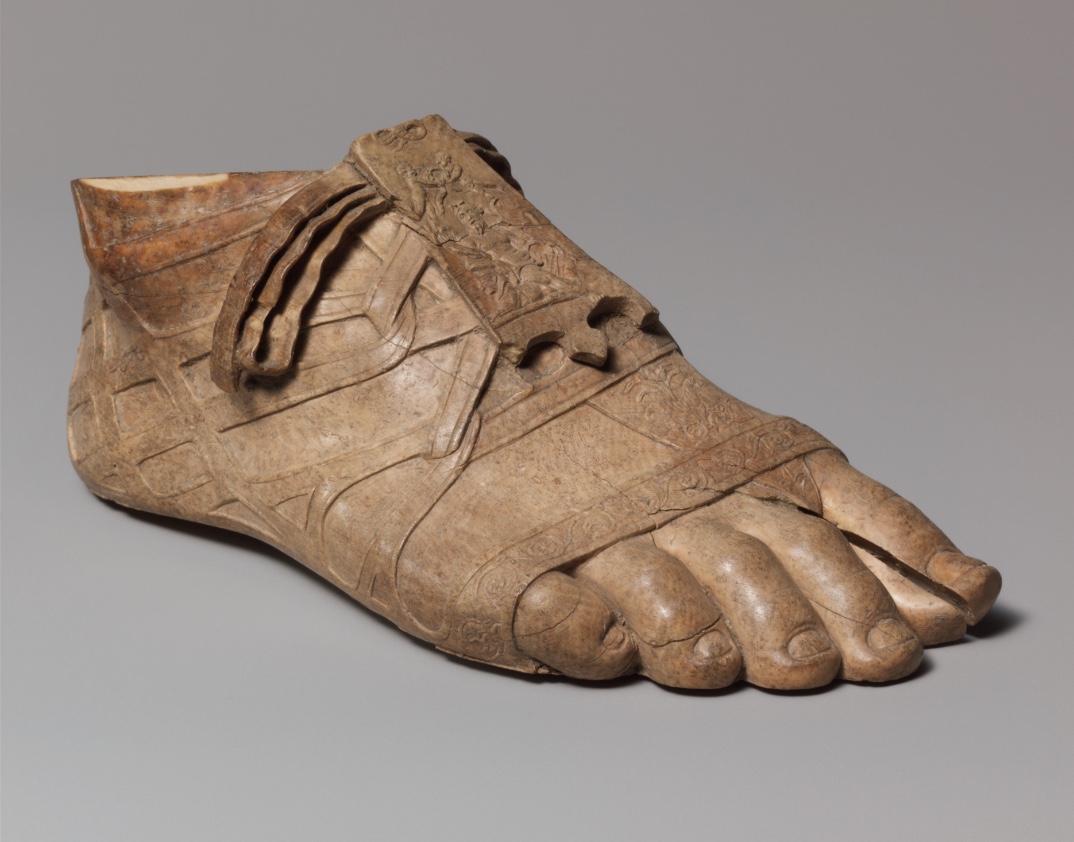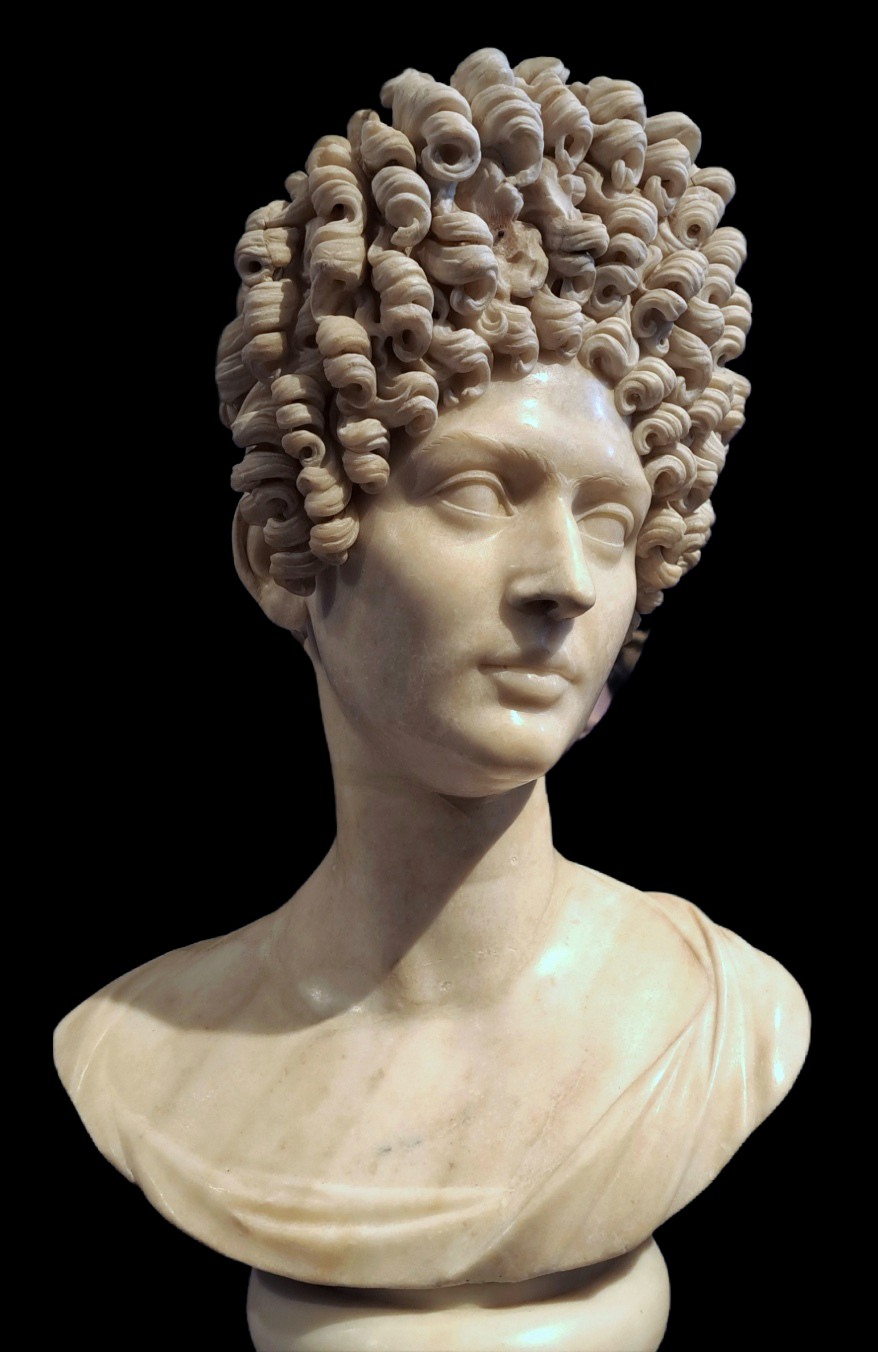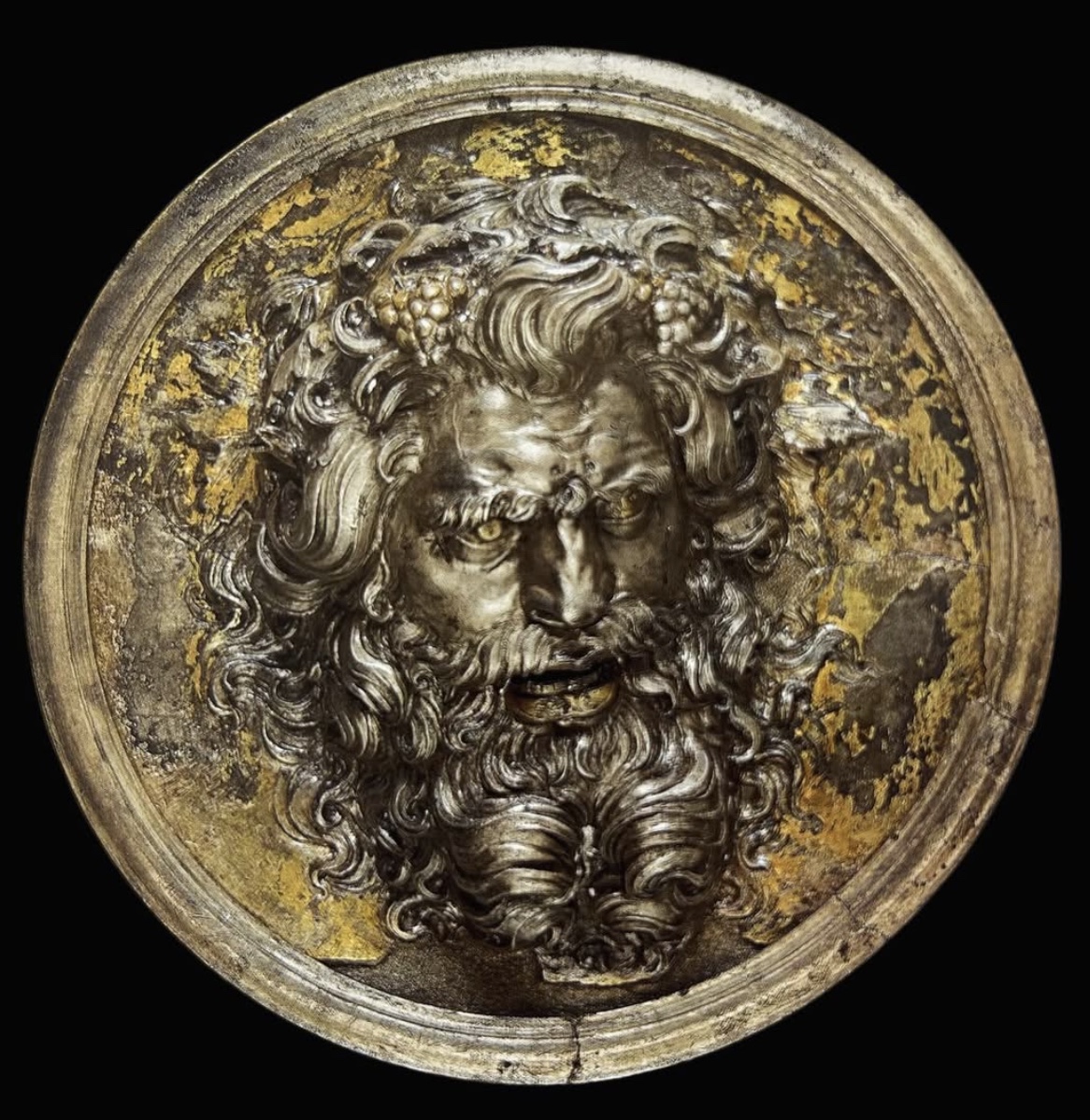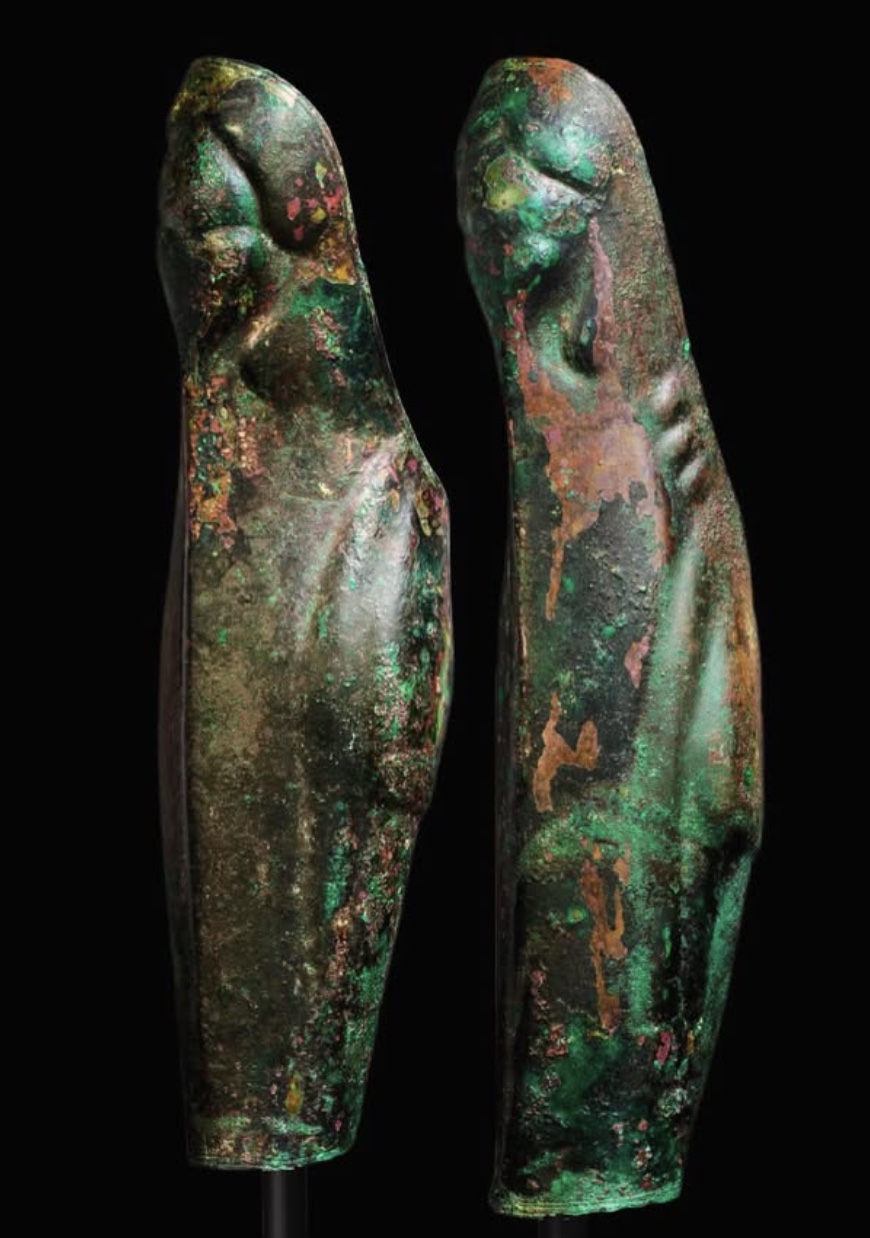This perfect little ivory foot at the Met is only 14.3 centimetres long, and exquisitely detailed both anatomically and iconographically. It is carved in exacting detail, replete with cuticles, toe-nails, ankle-bones, and knuckle-creases and on the whole invitingly tactile as far as feet go. The Greek-style sandal too, shows extreme sensitivity – the delicate krepides cradling the instep and ascending in a criss-cross, until the laces terminate in delicate loops.
The lingula (that wider plaque: the tongue!) is carved in low relief and shows the personification of the Nile, a bearded, draped river god, recumbent upon a sphinx and being crowned by two erotes. The curling lower-half of a snake tops the composition, but ends abruptly where the lingula is shorn off (likely Agathos Daimon).
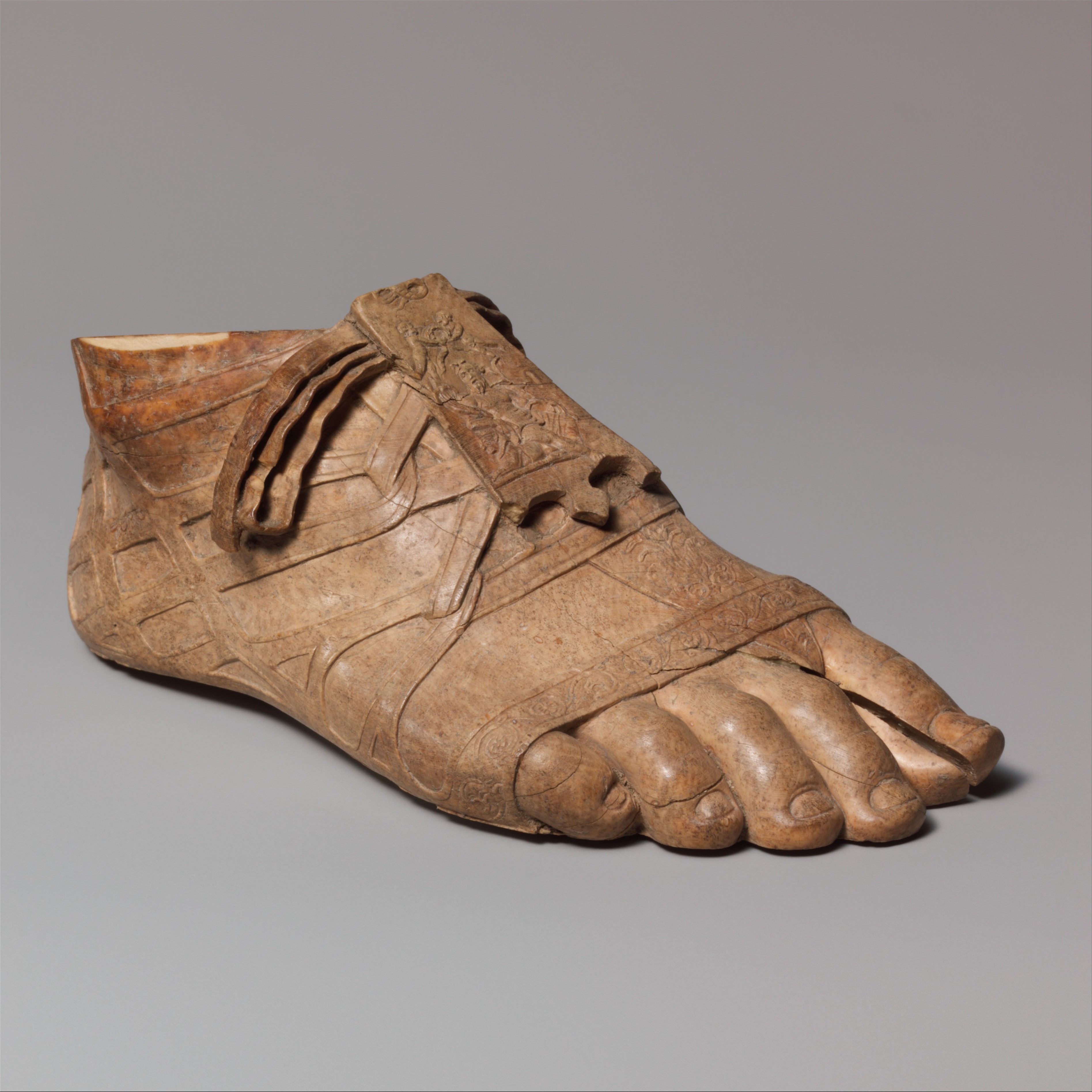
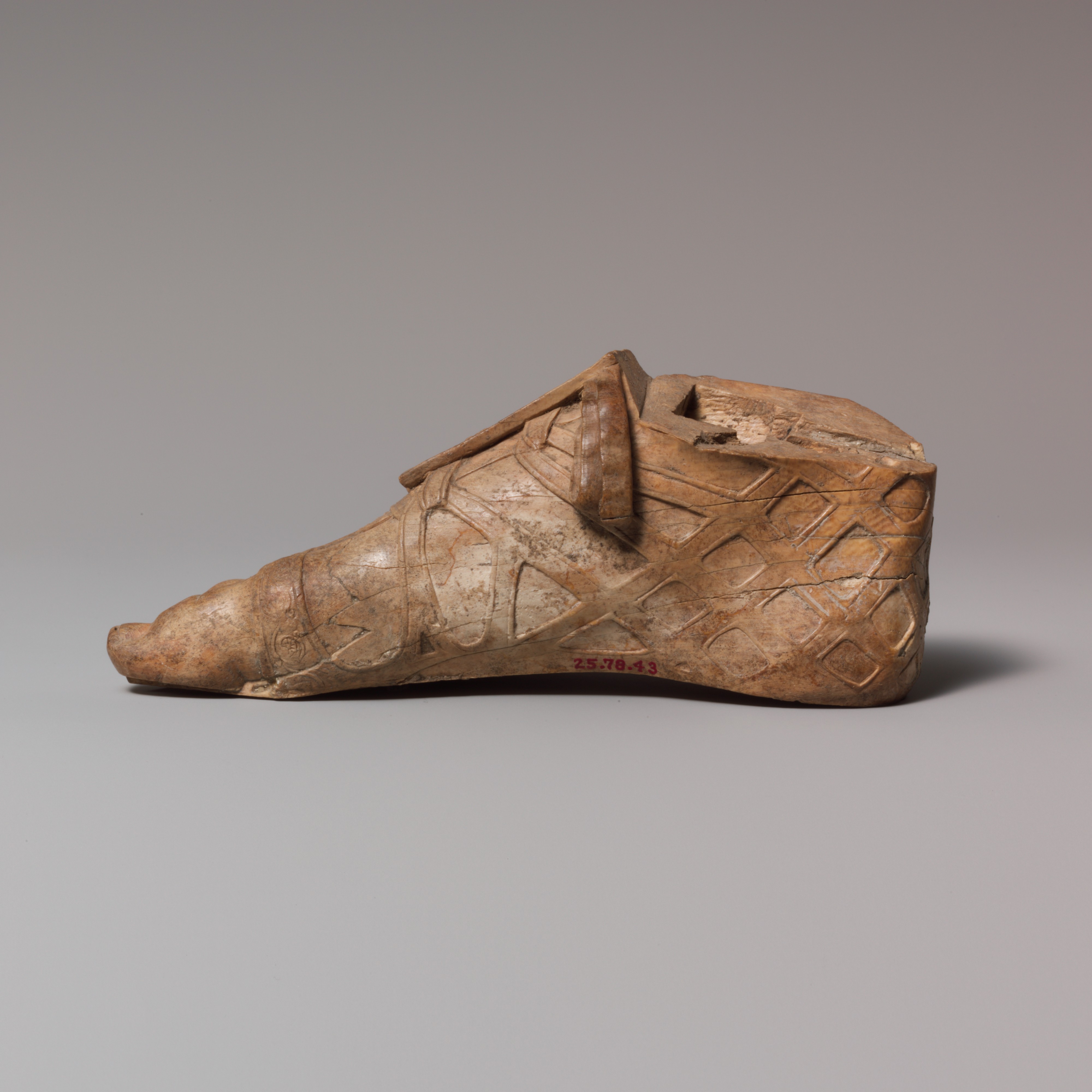
Luminous, creamy, and valuable (also symbolically so) ivory in Ancient Greece and Rome tended to be reserved for the representations of gods, and divinely-aspiring rulers. It has been suggested that this foot was once connected to a full length statue of Augustus after his defeat of Marc Antony and Cleopatra. Rather unlikely, however, that the emperor would be wearing Greek sandals…
I suggest a different cultic function: just around this period, right feet on their own were associated with the syncretic Roman-Egyptian god Serapis, thought to have curative powers, and dedicated in various sizes in his honour. This foot’s stand-out artistic quality, splash luxury material, and Egyptian theme might very well mean it was intended to stand on its own!

